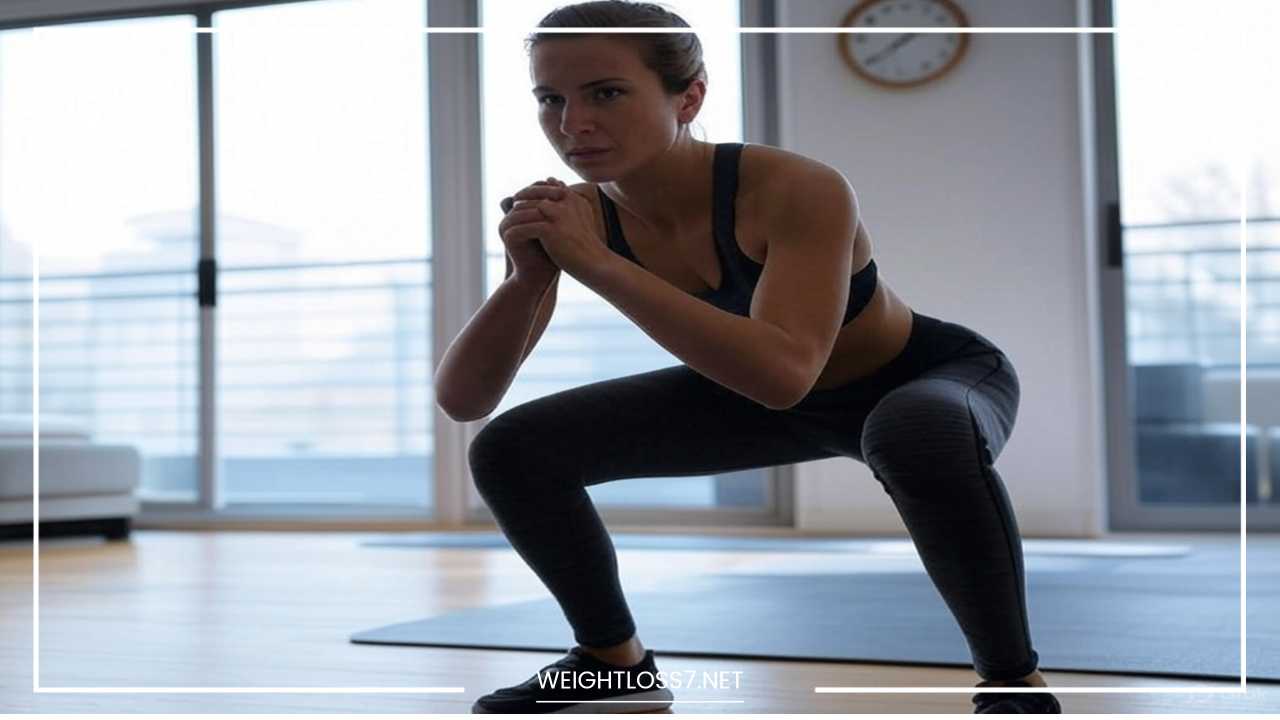HIIT Program at Home

HIIT Program at Home
Unleash Your Inner Athlete: A Comprehensive Guide to Your Ultimate Home HIIT Program
In today’s fast-paced world, finding the time and resources for a comprehensive fitness regimen can often feel like an insurmountable challenge. Gym memberships can be costly, travel time can eat into precious hours, and the sheer complexity of some workout programs can be daunting.
However, there’s a highly effective and remarkably convenient solution that allows you to achieve significant fitness results without ever stepping foot outside your door: High-Intensity Interval Training (HIIT) at home.
HIIT has taken the fitness world by storm, and for good reason. This dynamic training method involves short bursts of intense exercise followed by brief recovery periods.
Its efficiency and effectiveness have made it a favorite among fitness enthusiasts and busy individuals alike.
The beauty of HIIT lies in its adaptability; it requires minimal to no equipment and can be tailored to suit any fitness level, making it the perfect workout solution for your home.
This comprehensive guide will delve deep into the world of home-based HIIT, providing you with everything you need to design and implement your own personalized program.
We’ll explore the science behind its effectiveness, the myriad benefits it offers, how to structure your workouts, a wide array of exercises you can perform, sample workout plans, crucial safety considerations, and tips for staying motivated on your fitness journey.
Get ready to unlock your potential and transform your fitness from the comfort and convenience of your own home.
Understanding the Power of HIIT: More Than Just Short Bursts
At its core, HIIT is a training technique that alternates between periods of intense anaerobic exercise and less intense recovery periods.
This cyclical approach pushes your body to its limits during the high-intensity intervals, forcing it to adapt and improve.
The recovery periods, while allowing for a temporary respite, are kept short to maintain an elevated heart rate and maximize the metabolic benefits.
Contrast this with traditional steady-state cardio, where you maintain a consistent level of intensity for a prolonged period.
While steady-state cardio certainly has its place in a well-rounded fitness plan, HIIT offers a unique set of advantages, particularly when time is a constraint.
The magic of HIIT lies in its ability to trigger significant physiological responses in a relatively short amount of time.
One of the key benefits is the “afterburn effect,” scientifically known as Excess Post-exercise Oxygen Consumption (EPOC).
During intense exercise, your body incurs an oxygen deficit. After the workout, your body continues to consume oxygen at an elevated rate as it works to restore itself to its pre-exercise state. This process burns a significant number of calories even after you’ve finished your workout, contributing to enhanced fat loss.
Furthermore, HIIT has been shown to improve cardiovascular health, increase insulin sensitivity, and boost your metabolism more effectively than traditional steady-state cardio in some studies.
The intense bursts of activity challenge your heart and lungs, leading to improvements in their efficiency and overall function.
Research also suggests that HIIT can enhance aerobic capacity, reducing the time it takes for your body to recover after exercise.
In addition to its fat-burning benefits, HIIT is effective in building lean muscle mass. The high-intensity nature of the workout causes your muscles to work under pressure, resulting in increased strength and endurance over time.
This makes HIIT a powerful tool for individuals seeking a combination of fat loss and muscle gain without needing to spend long hours in the gym lifting weights.
Why Choose HIIT at Home? The Unbeatable Advantages
The allure of HIIT is amplified when you consider the convenience of performing it in the comfort of your own home. Here are some compelling reasons why a home-based HIIT program might be the perfect fit for you:
- Time Efficiency: HIIT workouts are typically short, often ranging from 10 to 30 minutes. This makes it an ideal option for individuals with busy schedules who struggle to carve out longer periods for exercise. You can squeeze in a highly effective workout before work, during a lunch break, or after the kids are in bed. Studies show that even just 15-20 minutes of HIIT can provide substantial fitness benefits, saving time while still offering a challenging workout.
- No or Minimal Equipment Required: Many effective HIIT exercises utilize your own body weight as resistance. This means you don’t need to invest in expensive gym equipment to get a great workout. While some minimal equipment like a jump rope or resistance bands can add variety, they are by no means essential. The simplicity of bodyweight HIIT workouts makes it an accessible and cost-effective solution for anyone.
- Improved Cardiovascular Health: The intense intervals in HIIT workouts challenge your cardiovascular system, leading to improvements in heart health, lung capacity, and overall endurance. In fact, studies have shown that HIIT can improve both aerobic and anaerobic fitness, which can translate into better performance in everyday activities and sports. Furthermore, the improvement in heart function can help reduce the risk of cardiovascular diseases such as heart disease, hypertension, and stroke.
- Enhanced Fat Burning: The combination of high-intensity exercise and the afterburn effect makes HIIT a highly effective tool for burning calories and reducing body fat. Research suggests that HIIT can help you burn more fat in less time than traditional cardio, making it an excellent choice for anyone looking to lose weight.
- Increased Metabolism: Regular HIIT workouts can help to boost your resting metabolic rate, meaning you’ll burn more calories even when you’re not exercising. This “afterburn” effect lasts for hours after the workout, further enhancing fat loss. Over time, this increased metabolic rate can lead to long-term improvements in body composition and weight management.
- Convenience and Accessibility: Your home is always open! You don’t have to worry about gym hours, travel time, or feeling self-conscious in a crowded fitness environment. You can work out whenever it suits your schedule and in complete privacy. This can be a significant advantage for individuals who struggle to find time or motivation to go to a gym.
- Improved Mental Health: Like all forms of exercise, HIIT can have a positive impact on your mental well-being. It can help to reduce stress, anxiety, and symptoms of depression, while also boosting your mood and energy levels. The endorphins released during exercise are known to improve mental clarity and emotional well-being, and HIIT, in particular, is known for its mood-boosting effects.
- Adaptability for All Fitness Levels: HIIT is a highly adaptable workout that can be modified to suit any fitness level. Whether you’re a beginner or an experienced athlete, you can adjust the intensity, duration, and types of exercises to match your capabilities. HIIT allows for continuous progression, meaning you can make workouts more challenging as you improve your fitness.
Crafting Your Personalized Home HIIT Program: A Step-by-Step Guide
Designing an effective home HIIT program requires careful consideration of your current fitness level, goals, and preferences. Here’s a step-by-step guide to help you get started:
1. Determine Your Fitness Level: Be honest with yourself about your current fitness abilities. Are you a complete beginner, someone with some exercise experience, or already quite fit? This will help you choose appropriate exercises and intensity levels.
A beginner may want to start with basic bodyweight movements, while someone more experienced can incorporate more advanced exercises like burpees, jump squats, or plyometric push-ups.
2. Set Realistic Goals: What do you hope to achieve with your HIIT program? Are you aiming to lose weight, improve your cardiovascular health, build endurance, or simply feel more energetic? Having clear goals will help you stay motivated and track your progress.
Ensure that your goals are specific, measurable, and attainable to keep yourself accountable. For instance, if weight loss is your goal, aim for a specific amount of weight to lose or body fat percentage to target within a certain time frame.
3. Choose Your Work-to-Rest Ratio: This refers to the duration of your high-intensity work intervals compared to your recovery periods. Common ratios include:
- Beginner: 30 seconds work / 30 seconds rest or 30 seconds work / 60 seconds rest
- Intermediate: 45 seconds work / 15 seconds rest or 40 seconds work / 20 seconds rest
- Advanced: 60 seconds work / 30 seconds rest or even shorter rest periods
Experiment to find a ratio that challenges you appropriately while allowing you to recover enough to maintain good form throughout the workout.
4. Select Your Exercises: Choose exercises that you are comfortable performing with good form and that target various muscle groups. We’ll explore a wide range of effective home-based HIIT exercises in the next section.
It’s important to balance your workout with both upper and lower body exercises, as well as cardio and strength-focused movements.
5. Structure Your Workout: A typical HIIT workout includes the following components:
- Warm-up (5-10 minutes): Prepare your body for exercise with light cardio like jogging in place, jumping jacks, or dynamic stretches like arm circles and leg swings.
- Work Intervals (determined by your chosen ratio): Perform your chosen high-intensity exercises with maximum effort.
- Rest Intervals (determined by your chosen ratio): Allow your body to recover with low-intensity activity like walking in place or complete rest.
- Cool-down (5-10 minutes): Gradually bring your heart rate down with light stretching, holding each stretch for 20-30 seconds. Focus on the muscles you worked during the workout.
6. Determine Frequency and Duration: Start with 2-3 HIIT sessions per week, with rest days in between to allow your body to recover. As you get fitter, you can gradually increase the frequency.
The duration of your HIIT workouts can vary, but typically ranges from 10 to 30 minutes (excluding warm-up and cool-down).
Unleashing Your Potential: Effective HIIT Exercises at Home
The beauty of home-based HIIT is the vast array of exercises you can perform without any equipment. Here are some highly effective options, categorized for clarity:
Bodyweight Powerhouses:
- Burpees: A full-body exercise that combines a squat, push-up, and jump. This is a highly effective calorie burner and works multiple muscle groups.
- Jumping Jacks: A classic cardio exercise that elevates your heart rate quickly and engages your arms and legs.
- High Knees: Running in place while bringing your knees up towards your chest. This targets your core and leg muscles.
- Butt Kicks: Running in place while kicking your heels back towards your glutes. This works your hamstrings and glutes.
- Mountain Climbers: Starting in a plank position, alternate bringing your knees towards your chest in a running motion. This engages your core, shoulders, and legs.
- Squat Jumps: Perform a regular squat and then explosively jump upwards. This builds lower body power and elevates your heart rate.
- Lunges (Forward, Reverse, Jumping): Various lunge variations target your quads, hamstrings, and glutes. Jumping lunges add an extra cardio element.
- Plank Jacks: Start in a plank position and jump your feet out to the sides and then back in. This engages your core and shoulders.
- Push-ups (with variations): A classic upper body exercise that works your chest, shoulders, and triceps. You can modify by performing them on your knees if needed.
- Russian Twists: Sit on the floor with your knees bent and feet slightly off the ground. Twist your torso from side to side, engaging your core.
Adding Minimal Equipment (Optional):
- Jump Rope: A fantastic cardio tool that improves coordination and burns a significant number of calories.
- Kettlebell Swings: If you have a kettlebell, swings are a great exercise for engaging your posterior chain (glutes, hamstrings, and back) and elevating your heart rate.
- Resistance Band Exercises: Resistance bands can add an extra challenge to exercises like squats, lunges, and glute bridges, providing resistance without the need for heavy weights.
Remember to focus on proper form over speed or the number of repetitions, especially when you are first starting out. Watch videos and pay attention to how your body feels to avoid injuries.

















